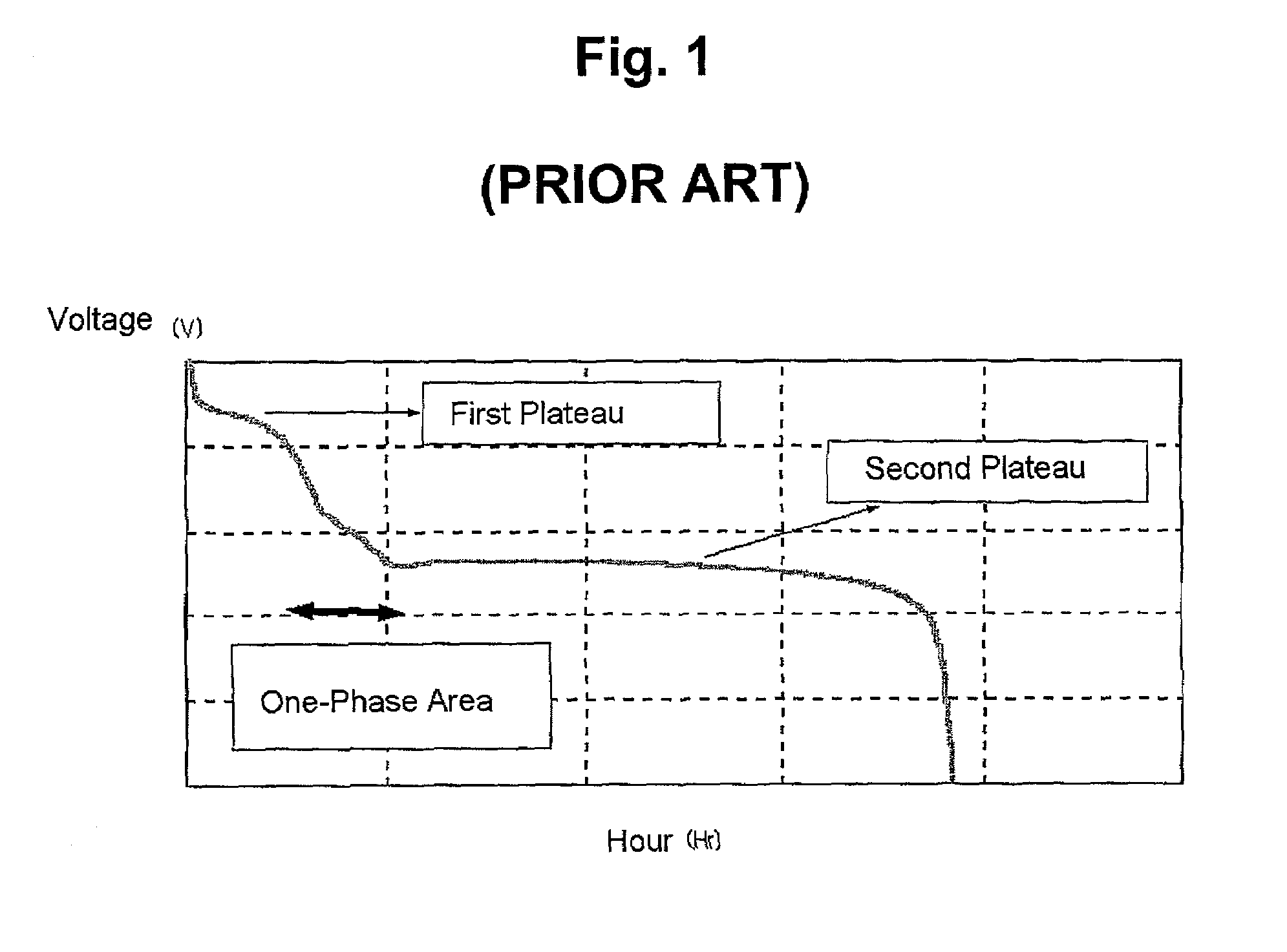Lithium-sulfur batteries
a technology of lithium-sulfur batteries and lithium-sulfur, which is applied in the direction of cell components, final product manufacturing, sustainable manufacturing/processing, etc., can solve the problems of low theoretical capacity of organosulfur, slow reaction rate at room temperature, and insufficient performance of the battery, etc., and achieve good cycle life characteristics
- Summary
- Abstract
- Description
- Claims
- Application Information
AI Technical Summary
Benefits of technology
Problems solved by technology
Method used
Image
Examples
example 1
[0057]Sublimed sulfur was pulverized in a solution of isopropyl alcohol with a ball mill to a particle size of 5 μm. The pulverized sulfur powder was mixed with a conductive agent and a binder with the ball mill to provide a slurry in which the particles were uniformly dispersed. Carbon black and polyethylene oxide (Molecular weight: 5,000,000) were used as the conductive agent and the binder, respectively. The sulfur, the conductive agent and the binder were mixed in the weight ratio of 60:20:20 in acetonitrile to prepare a viscous slurry. The slurry was coated on an aluminum foil using a doctor blade so that a positive electrode was obtained. The energy density of the resultant positive electrode was 1.0 mAh / cm2. Using a lithium metal with a thickness of 130 μm as a counter electrode, and 1 M LiSO3CF3, 1,3-dioxolane / diglyme / sulfolane / dimethoxy ethane (50 / 20 / 10 / 20, by volume ratio) as an electrolyte, a coin-type cell was fabricated in a glove box in which moisture was controlled.
example 2
[0058]The positive electrode was prepared by the same procedure as described in Example 1. The energy density of the resultant positive electrode was 0.6 mAh / cm2. Under an inert gas atmosphere, 6M(S) of Li2S8 was prepared by reacting Li2S with S8 in a solution of dimethoxy ethane with a ball mill to provide a polysulfide solution. Using a lithium metal with a thickness of 130 μm as a counter electrode and a polysulfide solution as a catholyte, but not using an additional electrolyte, a coin-type cell was fabricated in a glove box in which moisture was controlled.
example 3
[0059]A positive electrode was prepared by the same procedure as described in Example 1, except that 10% by weight of dibutyl phthalate was added to the positive active material slurry. The slurry was coated on the current collector and dried, and then the residual dibutyl phthalate was extracted with ether. The energy density of the resultant positive electrode was 0.6 mAh / cm2. Under an inert gas atmosphere, 6M(S) of Li2S8 was prepared by reacting Li2S with S8 in a solution of dimethoxy ethane with a ball mill to provide a polysulfide solution. Using lithium metal with a thickness of 130 μm as a counter electrode and a polysulfide solution as a catholyte, but not using an additional electrolyte, a coin-type cell was fabricated in a glove box in which moisture was controlled.
PUM
| Property | Measurement | Unit |
|---|---|---|
| size | aaaaa | aaaaa |
| size | aaaaa | aaaaa |
| size | aaaaa | aaaaa |
Abstract
Description
Claims
Application Information
 Login to View More
Login to View More - R&D
- Intellectual Property
- Life Sciences
- Materials
- Tech Scout
- Unparalleled Data Quality
- Higher Quality Content
- 60% Fewer Hallucinations
Browse by: Latest US Patents, China's latest patents, Technical Efficacy Thesaurus, Application Domain, Technology Topic, Popular Technical Reports.
© 2025 PatSnap. All rights reserved.Legal|Privacy policy|Modern Slavery Act Transparency Statement|Sitemap|About US| Contact US: help@patsnap.com



